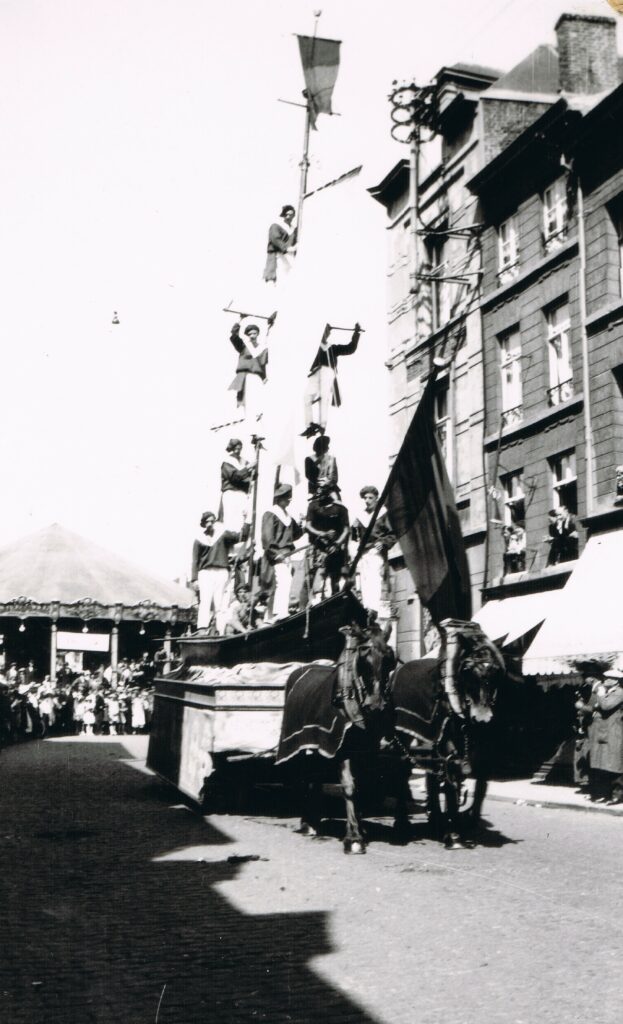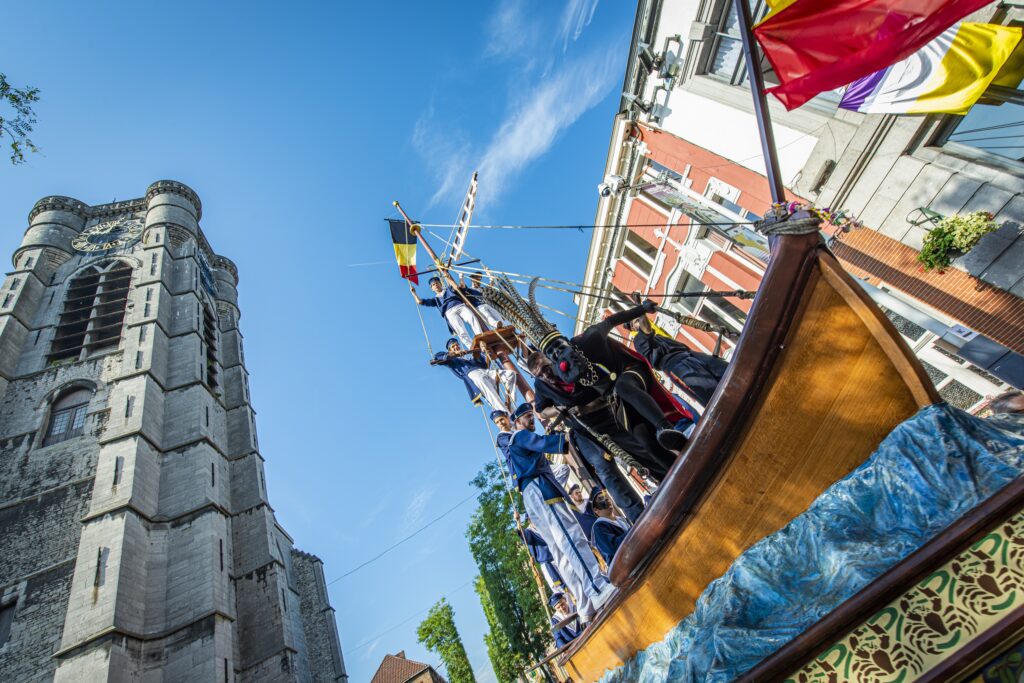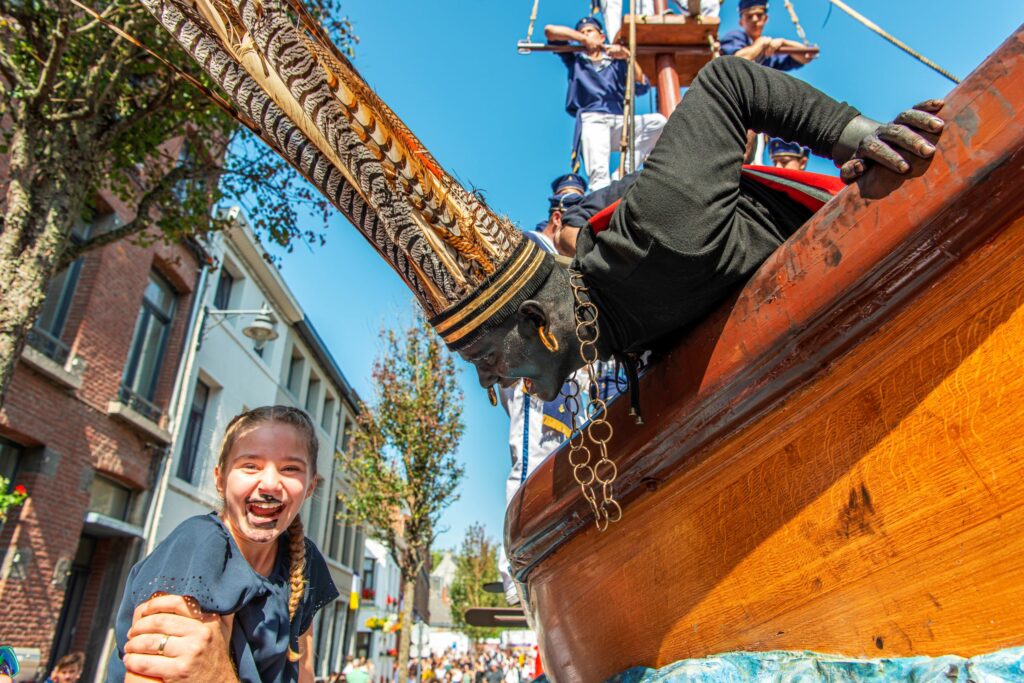In reality, the media attention around “Le Sauvage” has contributed to highlighting the character and presenting it as “the” emblematic figure of the Ducasse d’Ath. However, it is important to remember that for many people from Ath, the Ducasse is primarily a festival that showcases the tradition of the giants. The festivities last for several days, and the procession on Sunday is the most followed moment by the population. During this procession, there are 7 giants accompanied by their brass bands, eight allegorical floats, and several hundred extras.
In conclusion, “Le Sauvage” is just one of the extras, one element among many others. Although it holds a special place in the hearts of the people of Ath, it is primarily its evolution over the ages and the connections it has created with the local population that have made it inseparable from the Ducasse d’Ath.
Discussions take time because they require members to listen to and understand different points of view, especially those expressed by people outside the local traditions. Traditional festivals often include customs that appear normal to the community but strange to those who are not part of it. The reason is that local communities develop codes to interpret their traditions that are not understood by outsiders.
The local community is the only one responsible for its intangible heritage; therefore, it is up to the local population to find a solution. That is why the municipal authorities in charge of organizing the Ducasse have entrusted the task of opening the dialogue to the associative world and have decided to establish a Citizen Commission of Folklore. This commission is expected to provide an opinion on the issues surrounding the character. However, it is important to understand that the democratic process takes time and requires reaching a solution that respects traditions without harming other communities.
For the people of Ath, “Le Sauvage” is not the representation of the Ducasse d’Ath. However, over the generations and through interactions with the public, it has become an iconic and highly appreciated character, carrying positive values.
In the eyes of an Athois, “Le Sauvage” is a theatrical, imaginary, and fantastic character who exists only within the Ducasse d’Ath and is always accompanied by the “Pêcheurs napolitains” (Naples Fishermen). Some even call it “The Devil” (which reinforces its fantastical aspect). It is a unifying character, an animated figure, a true leader who can scare the youngest. Taming the “devil” has become a rite of passage; some children offer their pacifiers to show that they have overcome their fear. These pacifiers are then hung on the mast of the “Barque des Pêcheurs.”
During the days of the Ducasse, the people of Ath request a kiss from “Le Sauvage.” The trace of the makeup is proudly displayed as a promise of happiness and luck offered by the character. It is not uncommon to see the people of Ath running to ask for this lucky kiss.
No. At the beginning of the 20th century, the character evolved in the procession of the Ducasse d’Ath, becoming a very spectacular act: interacting with its guards, pretending to run away, and exaggerating (some texts report that the performer ate a raw rabbit). At that time, it was notably nicknamed “Dégoudant” (“disgusting”). During the colonial period, the character was sometimes confused with an African, which raised issues. In 1945, the presence of African-American soldiers during the festivities of the Ducasse caused discomfort for the municipal authorities. The city council demanded that the character be “colorful on a yellow-brown background.” A debate arose again in the 1960s, a period when African students were not uncommon at the School of Agriculture in Ath.
From the 1960s onwards, the perception of “Le Sauvage” evolved into the image it has today, abandoning its most controversial aspects. A new relationship was forged with the public, and the character’s representation achieved a certain stability after recruitment difficulties in previous years.
Originally, the character introduced in 1873 represented the stereotype of an Amerindian from the imaginary island of Gavatao in the Caribbean (black skin, loincloth, feather headdress, club, and rings). Today, it is accused of perpetuating racist stereotypes against African or Afro-descendant populations.
For people outside the tradition, the association between its name – “Le Sauvage” – its behavior – the role it plays on the “Barque des Pêcheurs” – and some of its attributes – its black color, nose ring, and chains – is incomprehensible and glorifies the colonial period by perpetuating the image that Black people are simple-minded savages. The Athois community acknowledges that the scene on the “Barque des Pêcheurs” can be shocking if taken literally.
Following numerous complaints to UNESCO, the international organization decided during the Intergovernmental Committee for the Safeguarding of the Intangible Cultural Heritage on December 2, 2022, to remove the Ducasse d’Ath from the UNESCO Representative List of the Intangible Cultural Heritage, to which it had belonged since 2008.
First, the group appeared in the mid-19th century, a time when the Ducasse procession was marked by two phenomena. Firstly, there was a strong nationalist sentiment that also contributed to reinforcing urban identity. In 1850, the old giant “Tyran” was transformed into “Ambiorix” to celebrate a national hero. The same year, the “Char de la Ville” (City Float) was created to transport famous characters from local history. In 1880, the “Char des Neuf provinces” (Float of the Nine Provinces) celebrated 50 years of the young Belgium. The second phenomenon was an interest in exoticism. In 1850, the floats of Indians, Scots, and Chinese appeared, which have now disappeared. Other groups of the same type also paraded in other processions, particularly during carnival cavalcades.
The appearance of the “Barque des Pêcheurs napolitains” in 1856 is part of this context. The group was created by an association, the “Matelots de la Dendre,” known for organizing shows, mainly comic opera and operettas. The “barque” probably evokes an opera from 1827, “Masaniello ou le pêcheur napolitain” (“Masaniello or the Neapolitan Fisherman”), which depicts a revolutionary hero from the 17th century.
The character of “Le Sauvage” appeared later in 1873. Originally, it did not represent an African but rather an Amerindian from the legendary island of Gavatao (which could be located in the Caribbean). Indeed, it was a stereotyped representation of an Amerindian (black skin, loincloth, feather headdress, club, rings) as can be found in numerous illustrations since the 17th century. Other examples of such stereotyped representation exist in traditional festivities: the giant “L’Indien” in Dendermonde, or the guards escorting the “Bœuf gras” (Fat Ox) during the carnival of Paris.


